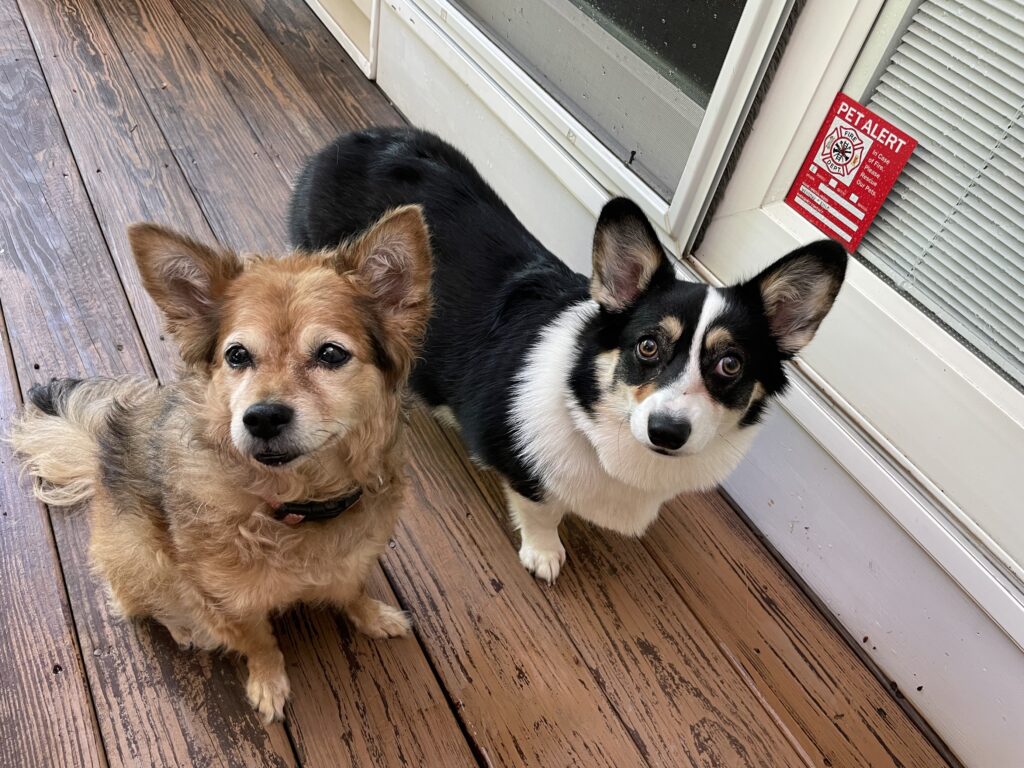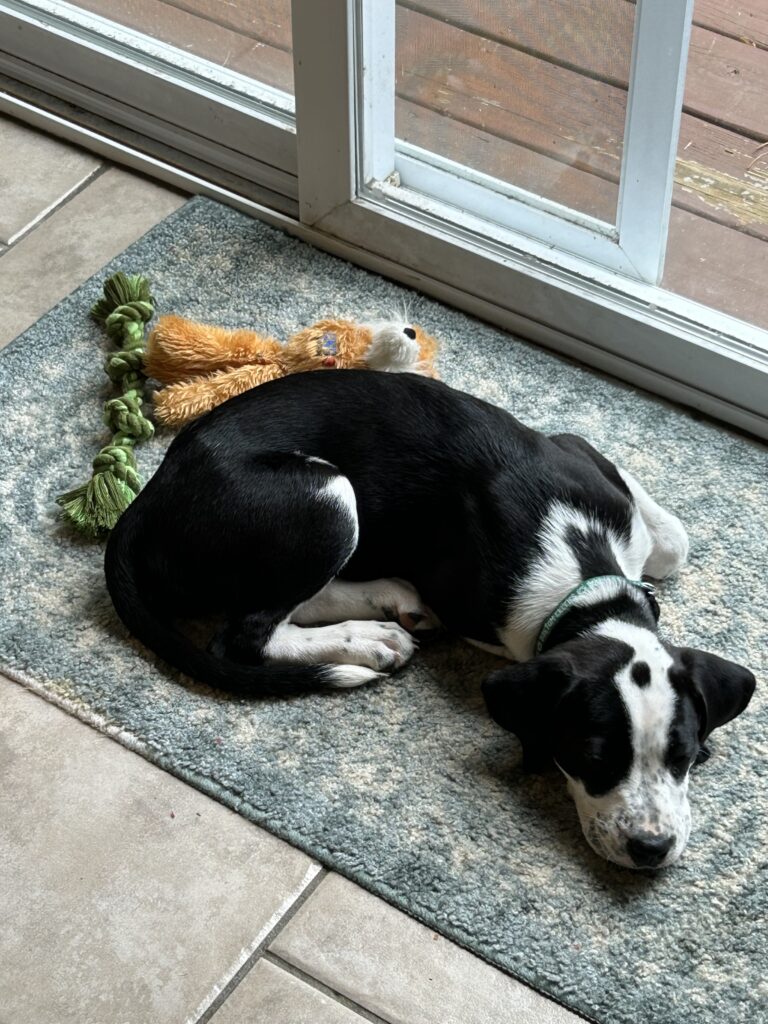

Tener una mascota es una experiencia que cambia la vida. Como cualquier otro miembro importante de su familia, usted quiere proporcionarle un entorno seguro en el que su mascota pueda ser feliz y estar sana.
Siga leyendo para conocer algunos consejos y trucos de seguridad para proteger a su mascota de los peligros que a menudo se pasan por alto hasta que es demasiado tarde.
¿ES SU CASA LO SUFICIENTEMENTE SEGURA PARA SU MASCOTA?
Puede que no se le ocurra hasta que llegue a casa con su primera mascota, pero es posible que la organización de su casa ya no tenga sentido. Incluso los dueños más experimentados se dan cuenta de que no lo tendrán todo bien organizado para su nueva mascota. Antes de preocuparte por nada más, tenga en cuenta su vivienda.
Cuando se trata de animales bebés, como gatitos y sobre todo cachorros, la preparación necesaria para crear un entorno seguro en casa para su mascota es aún más esencial.
"Es casi como ponerlo a prueba de bebés", dice la presidenta de la South Shore Humane Society, Jennifer Inzana. "Guarda todo lo que sea importante para ti hasta que tu mascota crezca un poco".
Cocinas y baños
- Se sabe que las mascotas abren los armarios con sus patas. Los cierres a prueba de niños pueden evitar este problema.
- Pero, ¿y si se meten en un armario o una estantería baja y encuentran medicamentos, productos de limpieza u otros productos químicos peligrosos? Esto es fácil: traslada esos artículos a estantes altos a los que no puedan llegar.
- Mantén los alimentos fuera de su alcance. Hay muchos alimentos que pueden ser perjudiciales para los animales, ¡por no hablar de los envoltorios!
- Traslada los cubos de basura a un armario cerrado con llave o tápalos, para evitar tentaciones.
- Mantén cerrada la tapa del váter. Además de ser asqueroso, puede haber productos químicos de limpieza en un retrete, y siempre existe el riesgo potencial de ahogamiento.




Sala de estar
- Mantenga los objetos pequeños fuera del alcance de los niños: juguetes, artículos de costura y manualidades, especialmente hilos.
- ¡Cuidado con los cables! Las lámparas, televisores, equipos de música y otros aparatos electrónicos suponen un grave riesgo para la seguridad si tu mascota es propensa a morder o tirar de los cables.
- Todos los lugares a los que no llega la aspiradora podrían contener objetos peligrosos, así que asegúrese de limpiarlos.
- Algunas plantas de interior son venenosas, así que manténgalas fuera de su alcance.
Dormitorios
- No encierre a un gatito en armarios y cajones. Comprueba antes con cuidado si tu felino deambula.
- Los zapatos y la ropa con cordones y botones suponen un gran riesgo para la seguridad, sobre todo si su mascota puede masticarlos o tragárselos. Estos objetos deben guardarse detrás de una puerta cerrada.
- Asegúrese de que los cosméticos, lociones o medicamentos se mantienen alejados de las superficies accesibles.
En el exterior
Inzana afirma que tener animales de compañía en el exterior, sobre todo gatos, conlleva riesgos de seguridad.
"Si vas a dejar salir a tus gatos, prepárate para los gastos del veterinario", dice.
Señala que los venenos destinados a matar roedores e insectos causan problemas a las mascotas. Y el mayor riesgo no es que la mascota ingiera directamente el producto químico.
"Los gatos se han envenenado comiendo un ratón envenenado", dice.
Inzana también aconseja a todos los dueños de mascotas que microchip sus mascotas. En caso de que su mascota se pierda, un veterinario o un refugio de animales pueden escanear el chip para determinar la propiedad de su mascota, o incluso para ayudar a los rescatadores a atenderla adecuadamente si padece alguna enfermedad.
¿CÓMO PROTEGER A MI MASCOTA DE UN INCENDIO?
Según la Asociación Nacional de Protección contra Incendios, cada año se producen casi 1.000 incendios provocados por animales domésticos, pero estos incidentes pueden prevenirse en gran medida. Así que qué puede hacer ¿tiene en cuenta la seguridad de su mascota?
Lo básico en casa
No deje a sus mascotas desatendidas cerca de llamas, fuegos o aparatos de cocina. Son curiosos y pueden intentar explorar el fuego o la superficie caliente. De hecho, cuando salga de casa, quitar o tapar los fogones es otra técnica sencilla para evitar que la naturaleza investigadora de su mascota se convierta en un peligro potencial.
Cuando tus mascotas son jóvenes, es aconsejable colocarlas en un lugar seguro, como una jaula o un recinto cerrado, lejos de posibles riesgos de incendio, siempre que no estés en casa para supervisarlas.
Luces y velas
Si su mascota tiende a morder cosas, tenga cuidado con los cables eléctricos. Asegúrelos en lugares donde su mascota no pueda acceder a ellos. Otra opción si su mascota es mordedora: rocíe el cable con un espray de manzana amarga para disuadirla por completo.
Las velas mejoran el ambiente, pero suponen un riesgo evidente para la seguridad de las mascotas, ya que pueden caerse. Las velas sin llama tienen una bombilla y no provocan un incendio si se caen.


Ayudar a los socorristas
Por muy meticulosos que seamos siguiendo los consejos de prevención de incendios anteriores, pueden ocurrir accidentes. Es importante saber cómo mantener a salvo a su mascota en caso de incendio. El primer paso es poner un señal de alerta para mascotas en su puerta. Esto indicará a los primeros intervinientes si tiene mascotas, qué tipo de mascotas son, así como descripciones de su aspecto, su nombre y quién es su veterinario.
Elabore un plan de evacuación en caso de incendio e incluya a su mascota. Aprenda cuáles son los escondites típicos de su mascota y, si no puede encontrarlos rápidamente, asegúrese de dejar las puertas abiertas detrás de usted. Sepa dónde están las salidas de la casa y dónde reunirse fuera. Practique un simulacro de incendio varias veces al año, incluyendo los pasos necesarios para mantener a salvo a su mascota.
>> DE PASO, MANTÉNGASE SEGURO AL VOLANTE CON ESTOS CONSEJOS
¿CÓMO PROTEGER A MI MASCOTA EN CASO DE EMERGENCIA?
Cuando se produce una catástrofe y tienes que pensar en lo que tienes que hacer, la mejor defensa es un buen plan. Además de planificar para ti y tu familia, tienes que tener en cuenta a tu amigo peludo. Así que antes de que ocurra una emergencia inesperada, prepárate para mantener a salvo a tu mascota.
Sepa dónde encontrar los principales artículos de seguridad que necesita su mascota
Puede parecer obvio, pero cuando estás agotado y necesitas salir de casa, saber dónde encontrar todo lo que necesitas es vital. Haz una lista de los objetos necesarios y guárdalos en lugares de confianza. Entre los artículos recomendados figuran:
- Correa, collar y placas de identificación
- Alimentos y agua
- Medicación
- Foto actualizada de tu mascota por si os separáis
- Condiciones médicas de su mascota e información de contacto del veterinario
Conocer la reanimación cardiopulmonar de mascotas podría salvar la vida de su animal
Los animales comen de todo, y las mascotas no son una excepción. Se comerán la comida que les des, pero eso no les impedirá masticar también otras cosas, desde palos hasta basura o cualquiera de los cientos de cosas que existen. A veces esto puede llevar a una situación de atragantamiento de emergencia. Hay una gran variedad de lugares para aprender cómo ayudar a una mascota que se ahoga es una gran manera de asegurarse de que su mascota estará a salvo, incluso en este peor de los casos.
Saber realizar una reanimación cardiopulmonar puede salvar la vida de tu mascota, así que pregunta a tu veterinario dónde puedes aprender la técnica. Si buscas una buena clase general de primeros auxilios con la que empezar, echa un vistazo a las formación en línea que ofrece la Cruz Roja Americana para perros y gatos. Además, la Cruz Roja ofrece un Aplicación de primeros auxilios para una referencia rápida durante una emergencia.
KECHES LAW GROUP PUEDE AYUDARLE SI TIENE UNA LESIÓN RELACIONADA CON SU MASCOTA
Póngase en contacto con abogados de daños personales para ayudarle en todo el proceso si necesita presentar una demanda por una lesión relacionada con su mascota.




